FW
Researchers at IIT Guwahati have developed a water-repellent, conductive textile that converts electricity and sunlight into heat. This innovation aims to protect against the health risks of prolonged exposure to cold, such as blood clotting, breathing difficulties, and weakened immunity.
Published in Nano-Micro-Small, the research was led by Prof Uttam Manna and his team, including Prof Roy P Paily. Extreme cold can be fatal, and traditional solutions like bulky clothing or heaters have limitations. Conductive textiles offer a lightweight alternative, but existing versions often lack durability and water resistance.
The IIT Guwahati team sprayed ultra-thin silver nanowires onto cotton fabric, making it conductive. These nanowires, thinner than a human hair, allow electricity to flow, generating heat while maintaining softness and flexibility. Silver nanowires were chosen for their high conductivity and ability to convert both electricity and sunlight to heat. Their low electrical resistance allows safe electro thermal conversion at low voltage.
To prevent tarnishing, the researchers applied a water-repellent coating inspired by lotus leaves. This coating's microscopic texture causes water to roll off, keeping the textile dry and ensuring long-lasting conductivity, even in damp conditions. The coating also protects against sweat, rain, and spills.
The textile can be powered by a small rechargeable battery or solar energy, maintaining a temperature between 40°C and 60°C for over 10 hours. Tested in wearable knee and elbow bands, it shows promise for providing sustained warmth to those working in cold environments or arthritis patients needing localized heat therapy. Other applications include on-demand water heating and accelerating chemical reactions.
The textile is self-cleanable, breathable, flexible, and scalable, with potential for various controlled heating applications, states Prof. Uttam Manna. The team has filed an Indian patent and is working to integrate the material with miniaturized electronics for product development. They are also seeking industry collaborations for dry thermos-therapy applications, he adds.
The European Commission has formally requested fast-fashion giant, Shein to provide detailed information about its product recommendation system and user data protection measures. The request requires Shein to disclose internal documents and details about how its algorithms suggest products.
The Commission is also seeking information on Shein's consumer protection practices, specifically how it safeguards user data and mitigates risks related to potentially illegal product sales, public health, and user well-being. Shein has until February 27, 2025 to comply. Failure to do so could result in a formal investigation and legal action.
This demand for transparency follows increased scrutiny of online marketplaces and their impact on consumers. The EU's Digital Services Act (DSA), now fully in effect, mandates greater transparency and accountability from large online platforms concerning hosted content and algorithms.
Coinciding with the announcement of Steve Bratpies, CEO stepping down from his position by 2025-end, HanesBrands reported better-than-expected sales in Q4, FY25.
The company’s sales from continuing operations increased by 4.5 per cent to $888 million, with sales from the US rising by 3 per cent and international sales increasing by 2 per cent due to the growth witnessed in Australia, the Americas, and Asia markets.
However, the company reported a net loss of $12.9 million for the quarter ending December 28, which includes a $58.5 million loss from discontinued operations due to the sale of Champion in September.
The company delivered a strong quarter and full year, exceeding expectations due to the success of its transformation strategy, states Bratpies. HanesBrands enters 2025 as a more simplified and focused business, well-positioned for positive sales growth, margin expansion, strong cash generation, and debt reduction, he adds.
HanesBrands has engaged Spencer Stuart to assist in the search for its next CEO. Bratspies will remain in an advisory role during the transition. Bill Simon, Board Chairman praised Bratspies' transformative leadership, noting his role in overhauling the operating model, selling the Champion business, and positioning HanesBrands as a global powerhouse in basics and innerwear.
HanesBrands' current brand portfolio includes Hanes, Playtex, Bali, L'eggs, Just My Size, Barely There, Wonderbra, Maiden form, Berlei, and Bonds.
Giriraj Singh, Textiles Minister inaugurated Indie Haat at the National Crafts Museum and Hastkala Academy in New Delhi. The event aims to promote India's handloom and handicraft heritage and connect local artisans with a global audience.
Running until February 18, 2025, Indie Haat was launched in partnership with the National Institute of Fashion Technology (NIFT) to showcase craft traditions in a contemporary way. It complements Bharat Tex 2025, a global industry event with over 5,000 exhibitors and an expected 6,000 international buyers from over 110 countries, taking place in New Delhi until February 17th.
Indie Haat features 80 types of handcrafted and handwoven products from 85 artisans and weavers across India, representing 55 handicraft artisans from 17 states and three union territories, and 30 handloom weavers from 20 states and one union territory.
Visitors can interact with artisans, see live demonstrations of traditional techniques, and browse textiles, jewelry, glasswork, metalware, and cane and bamboo crafts.
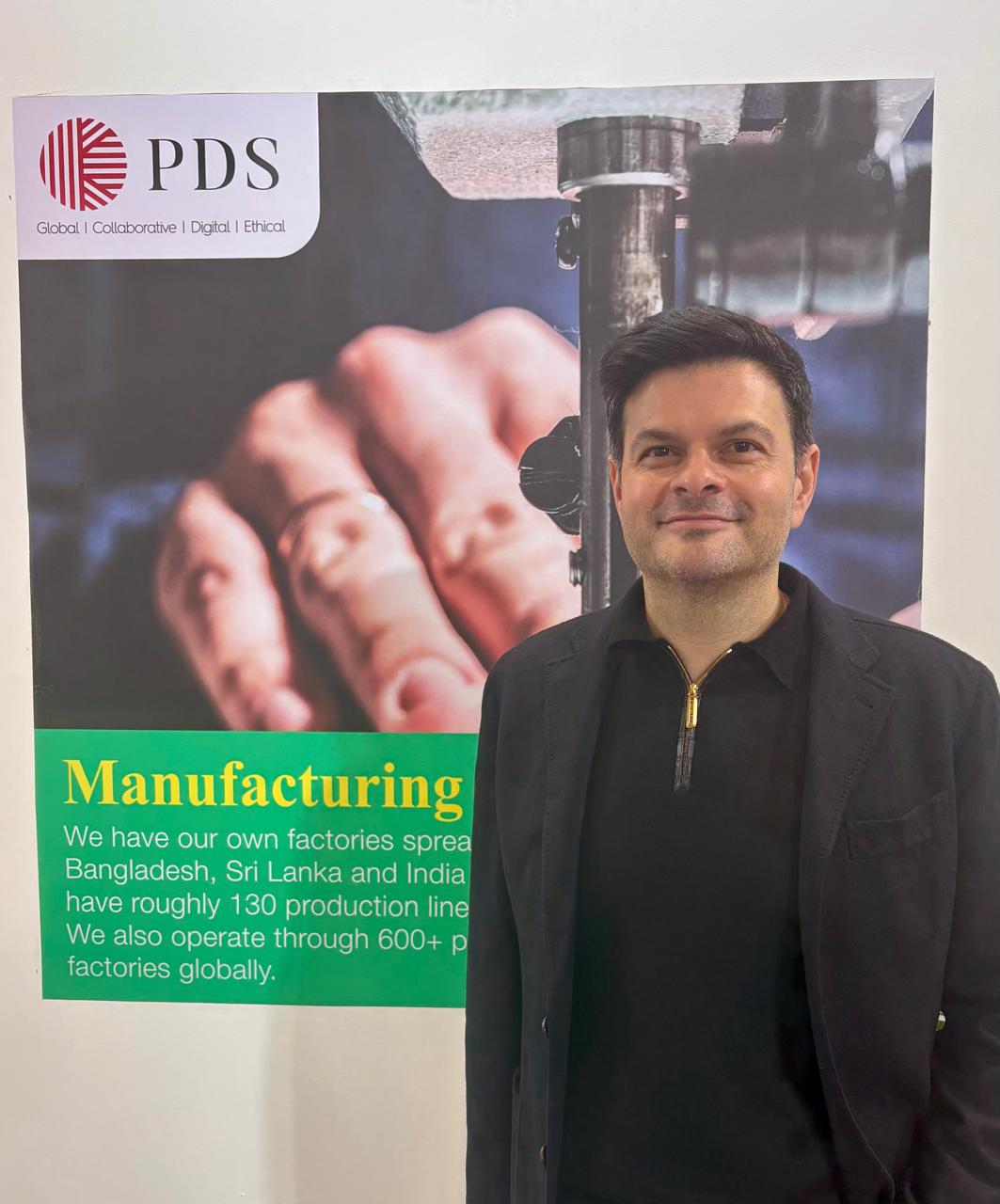
PDS Limited, a global fashion infrastructure and solutions company, participated as the 'Fashion Partner' for the second consecutive year at Bharat Tex 2025, India’s largest textile and apparel expo. The company’s booth highlighted its expertise in sourcing, brand solutions, and manufacturing capabilities.
Pallak Seth, Executive Vice Chairman of PDS Limited, emphasized India’s growing role in the global textile industry. “India can be a stable and reliable partner in an uncertain world by strengthening supply chain resilience through digital transformation, nearshoring, and sustainable manufacturing. At PDS, we drive agility, collaboration, and innovation to position India as a key player,” he said.
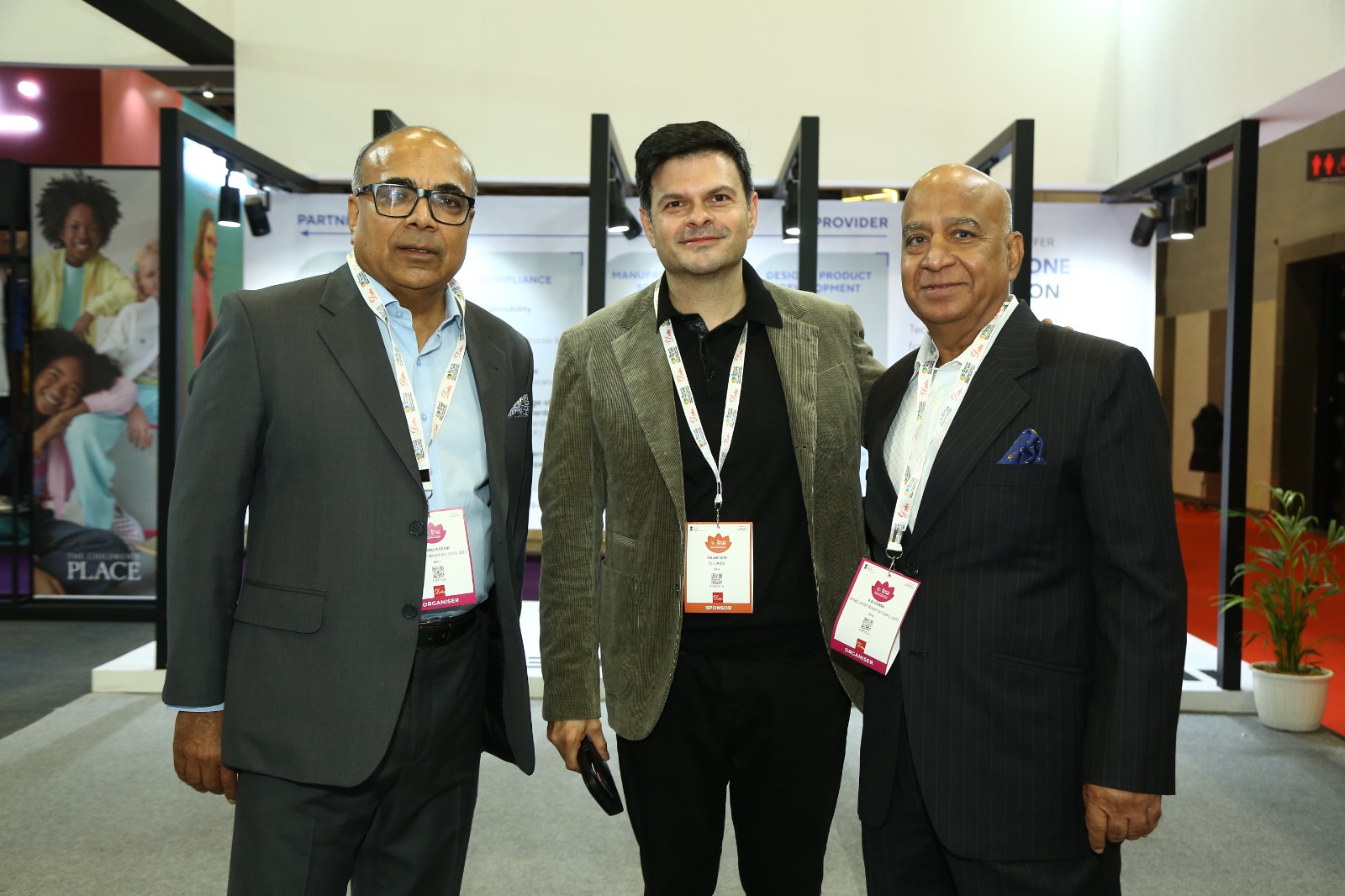
At the event, Pallak Seth participated in a roundtable on supply chain resilience and market disruptions, while Sanjay Jain, Group CEO of PDS Ltd, spoke on scaling up textile manufacturing in India. Both sessions featured industry leaders, government officials, and investors discussing growth strategies and milestones for the sector.
“Bharat Tex 2025 has been a key platform for global collaboration and innovation,” said Sanjay Jain. “We are committed to sustainable growth, expanding India’s manufacturing footprint, and strengthening the country’s role in the global supply chain.”
PDS used the event to reinforce global partnerships, engage with stakeholders, and showcase its leadership in responsible sourcing and supply chain transformation. The company remains focused on driving innovation and positioning India as a hub for scalable, high-quality, and sustainable textile manufacturing.

Traditionally synonymous with cotton, Man-Made Fibers (MMFs) like polyester and viscose are gradually gaining ground in India, reshaping the landscape of textile production and consumption. This shift is driven by evolving global trends, economic considerations, and the inherent advantages of MMFs.
The global shift towards MMFs
Globally, the textile fiber market is dominated by MMFs, which make up approximately 75 per cent of total consumption. This shift is largely due to the inherent limitations of cotton in meeting the growing demand for textiles. MMFs offer several advantages, such as cost-effectiveness, durability, and superior strength compared to cotton, resulting in longer-lasting garments. They can be engineered to possess properties like wrinkle resistance, water repellent, and elasticity, making them suitable for a wide range of applications. Moreover, unlike cotton, MMFs provide consistent quality and uniformity. While some MMFs are produced using fossil fuels, technological advancements are leading to sustainable alternatives, such as recycled polyester and bio-based viscose.
India's MMF journey
Despite being a major cotton producer, India is witnessing a rise in MMF consumption. The Economic Survey 2024-25 highlighted that only 22 per cent of the global textile market is cotton-based, while 77 per cent is dominated by MMFs. This underscores the need for India to align with global trends to boost exports. "India has a great opportunity to align with the evolving global shifts in apparel demand," the Economic Survey noted. "While our comparative advantage lies in cotton and cotton-based products, global demand has shifted to products made from man-made fibre (MMF)." India is the second-largest producer of both polyester and viscose globally. According to the Ministry of Textiles, India's current production capacity for MMFs is around 1,700 million kg for fibers and 3,400 million kg for filaments. The major varieties of MMFs produced in India include polyester, viscose, nylon, and acrylic. Several companies are investing in expanding their MMF production capacity. For instance, Reliance Industries, the largest polyester producer in the country, is expanding its capacity, while Grasim Industries, a leading producer of viscose staple fibre (VSF), is also increasing production to meet growing demand for viscose fibre in the textile industry.
Price Disparity: A Concern
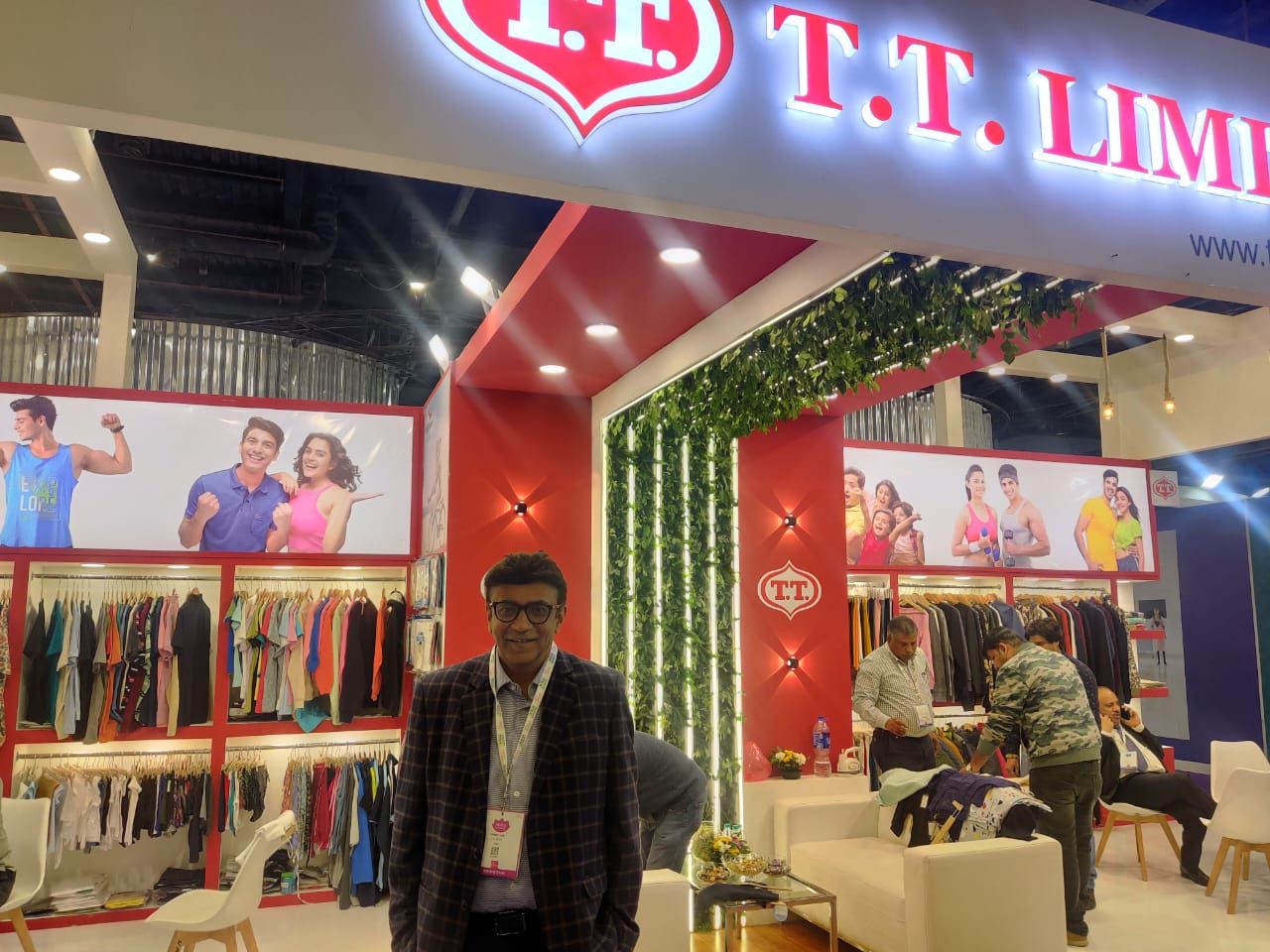
However, the industry faces several challenges, particularly in pricing. Sanjay K Jain, Chairman of the ICC National Textiles Committee and MD of TT Limited, expressed concerns regarding the price disparity between domestically produced MMFs and those available internationally. "We have all the promise. The whole world is looking at us, so we need to focus more on MMF if we really want to become a global textile giant. We need to improve MMF fibre prices as we are more expensive than our competitors in China, Vietnam, and Bangladesh. The government needs to correct this,” Jain stated.
He further emphasized the stagnation in the cotton industry, with declining yields, which underscores the urgency for India to address its MMF sector. Jain noted the growth in polyester production both globally and within India but cautioned against relying solely on tariffs to bridge the competitive gap. He advocated for a more robust competitive structure that allows for the free flow of raw materials.

Anurag Asthana, COO of EPIC HK, also highlighted this challenge: “We are the second largest MMF producer, but for converting fiber into usable material for textiles that is trend-right, market-right, and consumer-right, is the gap we need to fill. This indicates that while production capacity exists, the challenge lies in effectively utilizing MMF in textile manufacturing.”
Government initiatives and policy support
Recognizing the crucial role of MMFs in the future of the textile industry, the government has taken several proactive steps to promote the sector. The Ministry of Textiles has set a target of achieving $12 billion in exports of MMF textiles by 2029-30. This ambitious goal is being pursued through a multi-pronged approach:
Production linked incentive scheme: The scheme for textiles aims to incentivize the production of MMF fabrics, garments, and technical textiles by offering financial incentives to manufacturers, encouraging them to invest in MMF production and expand their capacities.
Focus on R&D: The government is actively promoting research and development in the MMF sector, particularly in sustainable production technologies and the development of innovative MMFs. This aims to enhance the quality and competitiveness of Indian products.
Skill development programs: Various skill development programs are being implemented to train individuals in MMF production, processing, and related areas.
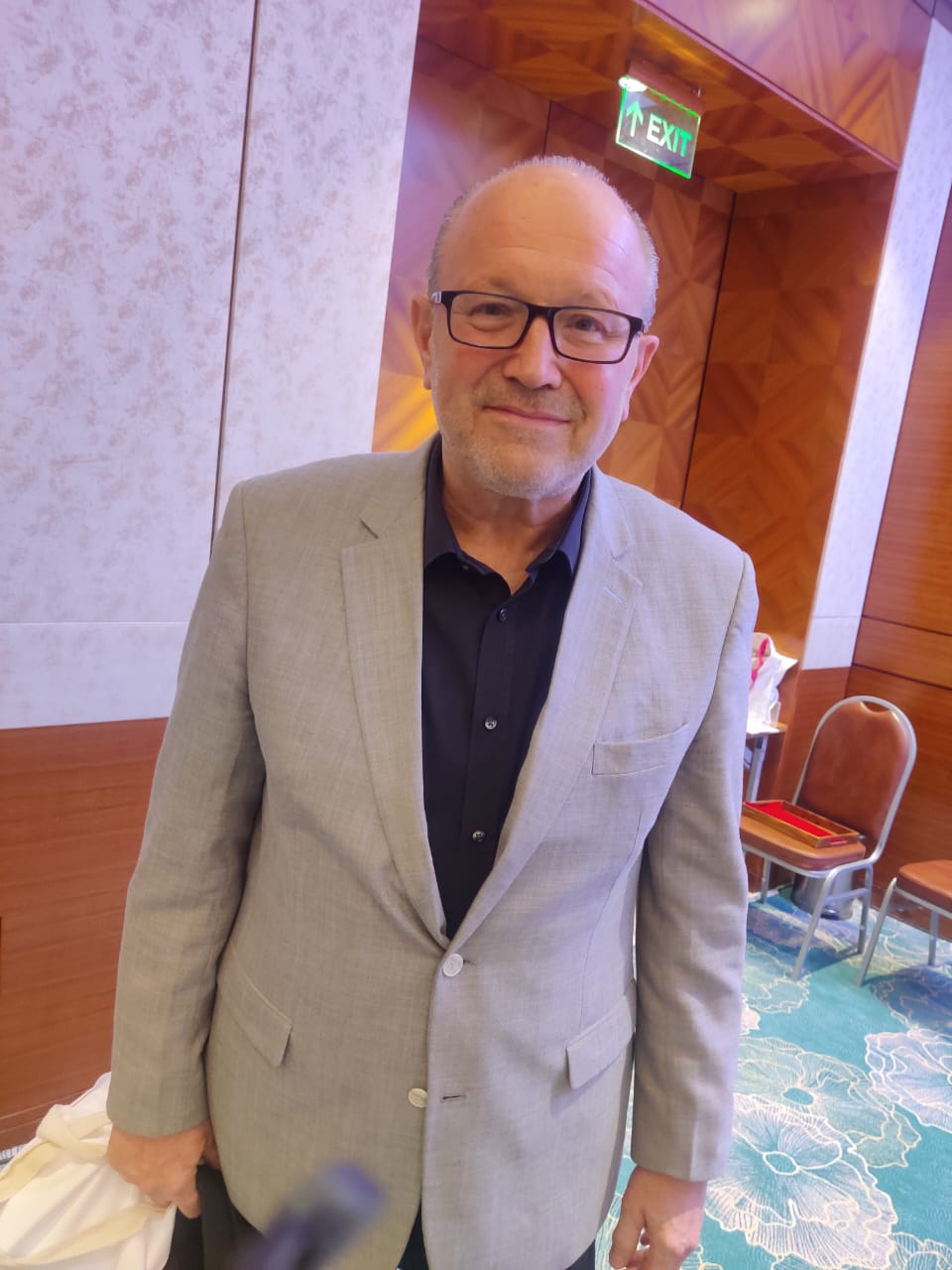
Mark Jarvis, Chief Strategy Officer at F2F, expressed optimism about the future: “Over the next five years, MMF will grow significantly in India. There will be an incredible level of investments into MMF fibres to complement the base of cotton that's already in the country."
The road ahead
The rise of MMFs marks a pivotal moment for the Indian textile industry. As global demand shifts toward MMF-based products, India has the opportunity to emerge as a key player in the sector. However, this will require a concerted effort to overcome pricing challenges, enhance production capabilities, and bridge the gap between fiber production and textile manufacturing.
With strong government initiatives, strategic investments from industry leaders, and a growing focus on sustainability and innovation, the future of India’s MMF sector looks promising. As the industry continues to evolve, India is poised to play a leading role in shaping the global textile landscape.
India has reclaimed its place as the 'Cotton King' in global market. With its vast acreage under cultivation and a thriving textile industry, India has emerged as a dominant force in cotton production and export. This resurgence is due to numerous factors like government initiatives, technological advancements, and the resilience of Indian farmers. However, challenges such as climate change and pest infestations continue to pose a threat to this vital sector.
The ‘Cotton Kingdom’
As per the Ministry of Textiles, India has the largest area under cotton cultivation globally, accounting for approximately 39 per cent of the world's total cotton acreage. India is one of the top producers of cotton globally. As Sanjay Kumar, President of the Cotton Association of India says, "India's cotton sector has witnessed a remarkable transformation in recent years. The government's focus on promoting sustainable farming practices and supporting technological advancements has helped to boost production and quality. This has made India a preferred supplier in the global cotton market."
Ministry of Textiles report says, India is the only country which grows all four species of cotton. India's dominance in the global cotton market is not merely a matter of production volume. Several factors contribute to its strength. First is the abundant resource with a large area under cotton cultivation, providing a substantial raw material base. A vast pool of skilled labor is available for farming, ginning, and textile manufacturing. The adoption of Bt cotton and other modern technologies has boosted productivity and quality. Government policies like MSP and export incentives provide support to the cotton sector. And a thriving domestic textile industry provides a ready market for Indian cotton.
India scores higher as a cotton exporter than many other countries because of its competitive pricing. Also the quality of Indian cotton has improved significantly in recent years. India has a well-established supply chain, ensuring timely delivery of cotton to exporters. And the diverse range of cotton species grown in India allows it to cater to specific requirements of different buyers.
Some major export destinations are:
China: Despite being a major cotton producer, China imports significant quantities from India. In fact, China's growing demand for high-quality cotton has provided an opportunity for Indian exporters.
Bangladesh: Bangladesh's robust garment industry relies heavily on imported cotton, with India being a primary supplier.
Vietnam: Similar to Bangladesh, Vietnam's textile sector depends on cotton imports, making India a key trading partner.
Pakistan: Although facing political tensions, Pakistan remains an important market for Indian cotton due to its proximity and established trade links.
Challenges in the cotton fields
Despite its strong position, the cotton sector has numerous challenges. Climate change, with erratic rainfall patterns and rising temperatures, poses a significant threat to yields. Pest infestations, such as the pink bollworm, also wreak havoc on crops, causing substantial losses. "Approximately 67 per cent of Indian's cotton is produced on rain-fed areas and 33 per cent on irrigated lands," reveals the Ministry of Textiles report.
Also, prices have a significant impact on the industry. Price fluctuations affect the cost of production, impacting global competitiveness. To mitigate this risk, the government has implemented policies to stabilize cotton prices and ensure a steady supply of raw materials.
To address other challenges, the government has launched several initiatives. The Cotton Corporation of India (CCI) plays a crucial role in procuring cotton from farmers at Minimum Support Prices (MSP), ensuring a stable income. The government also promotes the use of Bt cotton, that is resistant to certain pests, to improve yields.
The cotton-textile symbiosis
The cotton industry is linked to the textile sector. The availability of high-quality cotton at competitive prices is essential for the textile industry. The textile industry, in turn, is market for domestic cotton. This symbiotic relationship has helped both sectors to grow. "The textile industry consumes a diverse range of fibres and yarns and the ratio of use of cotton to non-cotton fibres in India is around 60:40 whereas it is 30:70 in the rest of the world," notes the Ministry of Textiles.
With government support, technological advancements, and the adoption of sustainable farming practices, India is ready to strengthen its position as the 'Cotton King' of the world.
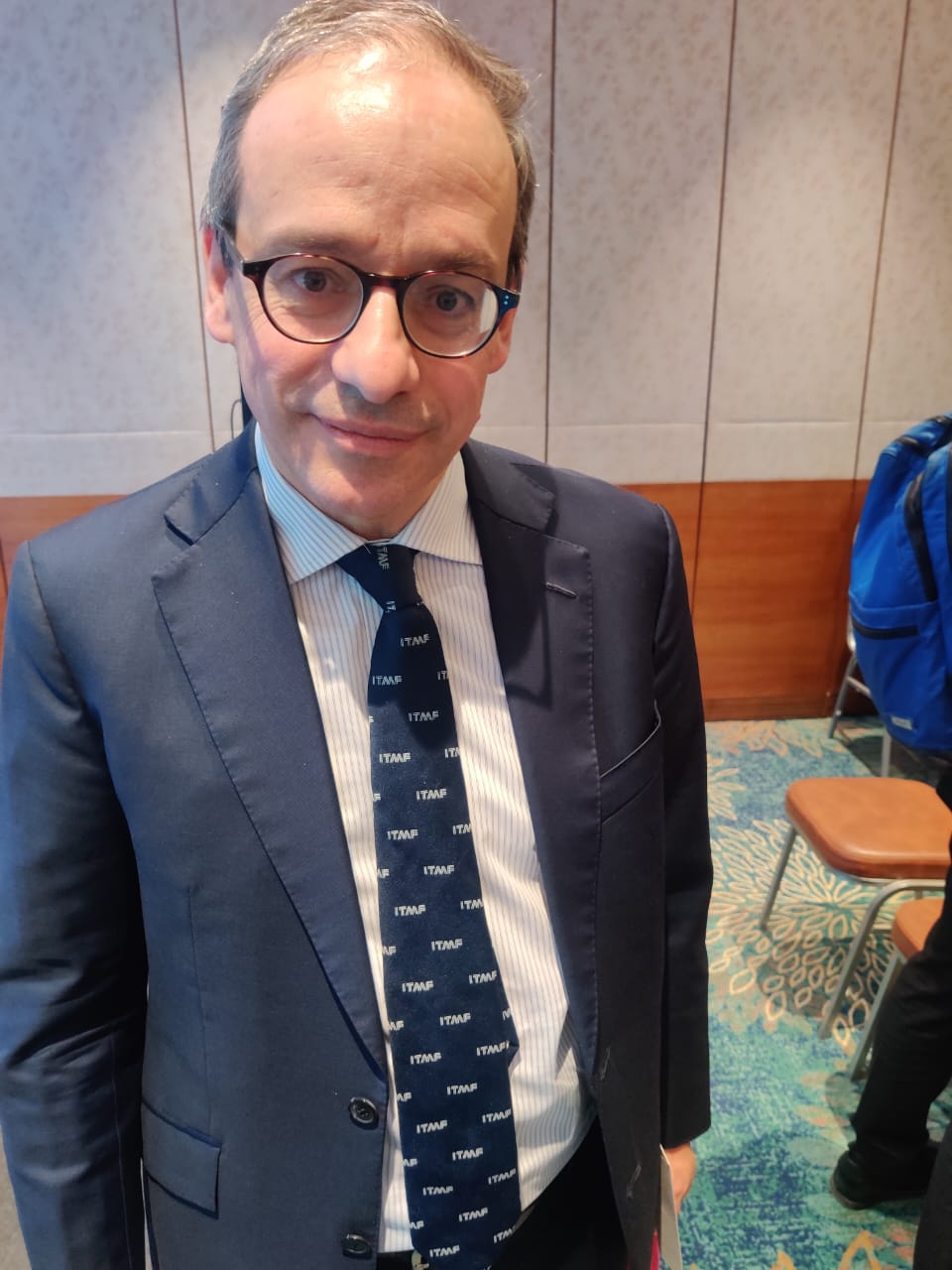
Bharat Tex 2025 served as a crucial platform for discussions surrounding the global textile industry's current state and future prospects. Christian P Schindler, Director General of the International Textile Manufacturers Federation (ITMF), provided a comprehensive overview, highlighting both the challenges and the significant opportunities that lie ahead.
Global Demand Dynamics: A two-year slump and pockets of resilience
Schindler addressed the elephant in the room: the persistent decline in global textile demand over the past two years. He cited ITMF surveys indicating widespread struggles with rising costs and weakened market demand. However, he offered a glimmer of hope, pointing to South America, specifically Brazil, as a region bucking the trend and demonstrating resilience against the global downturn. This regional variance underscores the complex and dynamic nature of the current market.
India's Textile Potential: A beacon of opportunity in Asia
Amidst the global challenges, Schindler emphasized India's immense potential within the Asian textile landscape. He lauded India's vast workforce, rich textile traditions, and abundant raw materials, positioning the country as a potential leader in textile production in the coming years. His remarks resonated strongly with the audience, reinforcing the belief in India's ability to reclaim its historical significance in the global textile arena.
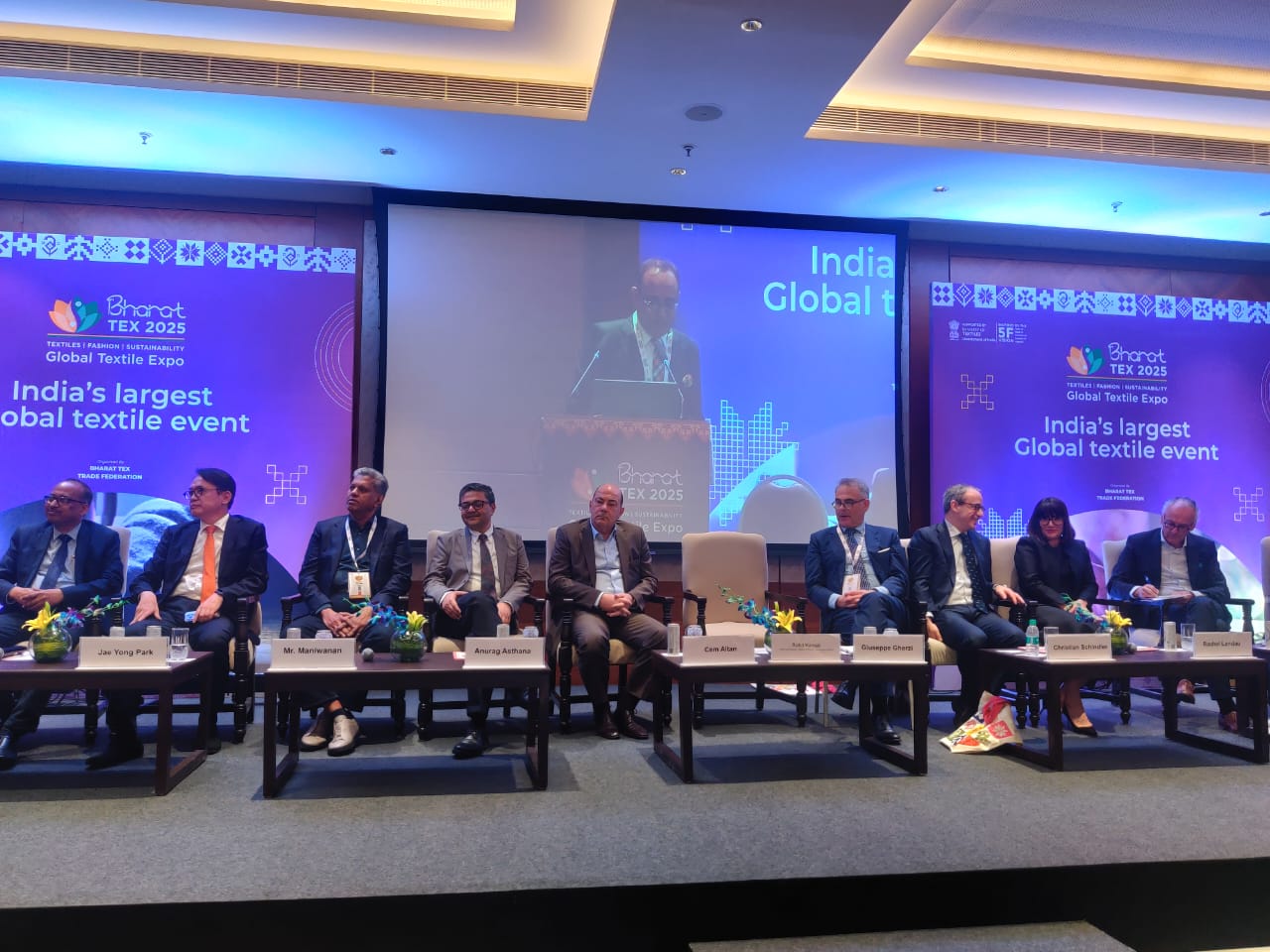
Sustainability Imperative: A must-have for global competitiveness
The discussion then shifted to the critical issue of sustainability. Schindler stressed the growing importance of sustainable practices, particularly for companies targeting European markets. He made it clear that sustainability is not a mere trend but a fundamental requirement for continued market access. He highlighted the increasing stringency of regulations and the need for suppliers to demonstrate their commitment to sustainability through verifiable data and digital transparency.
Digital Transformation and Sustainable Processes: Keys to competitive advantage
Schindler urged Indian textile companies to invest strategically in both digital technologies and sustainable processes. He emphasized that early adoption of these crucial elements would provide a significant competitive edge in the evolving global market. His message underscored the need for proactive adaptation and investment to stay ahead of the curve. Collaboration and Innovation: The path forward for India
The interactive session fostered a vibrant discussion on how India can effectively integrate sustainability into its textile production processes. Schindler advocated for collaborative efforts among all stakeholders, emphasizing that the transition to sustainable practices requires collective action and continuous innovation. He stressed the importance of a unified approach to address the complex challenges and capitalize on the emerging opportunities.
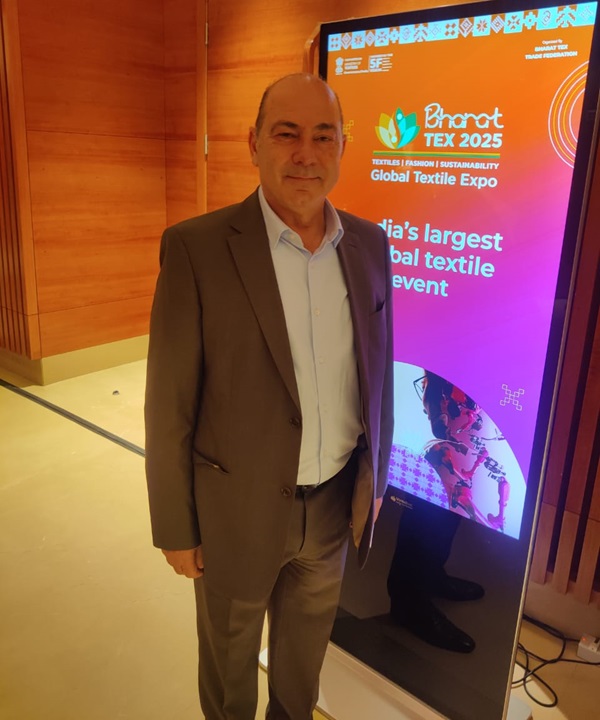
The Indian textile industry stands at a critical juncture. As global dynamics shift, the nation has a unique opportunity to ascend to a position of global leadership. This transformation, however, hinges on embracing sustainability, digitalization, and strategic collaboration, as emphasized by Cem Altan, President of the International Apparel Federation, while speaking at one of the knowledge sessions during Bharat Tex 2025.
Beyond Buzzwords: The cornerstones of future success
Altan's message was clear: the traditional model is no longer viable. "The textile and apparel landscape is undergoing a radical shift," he asserted. "Sustainability, digitalization, and automation are not optional; they are the cornerstones of future success." India, with its vast domestic market and established textile infrastructure, possesses immense potential. However, Altan stressed the need for a more outward-looking approach. "India must aggressively target export markets," he declared, highlighting the necessity of a focused marketing strategy to capture global demand.
Bridging the Gap: Supply chain integration and industrial clusters
A key challenge Altan identified is the need for improved supply chain integration. While acknowledging the presence of large, vertically integrated companies in India, he pointed to accessibility as a major hurdle. "International buyers often struggle to connect with the right suppliers," he explained. His solution? Investing in robust industrial clusters. "These clusters will foster collaboration, streamline supply chains, and simplify the sourcing process for global customers," he argued. This strategic clustering, combined with digitalization, will create a more transparent and efficient ecosystem, attracting international investment and driving export growth.
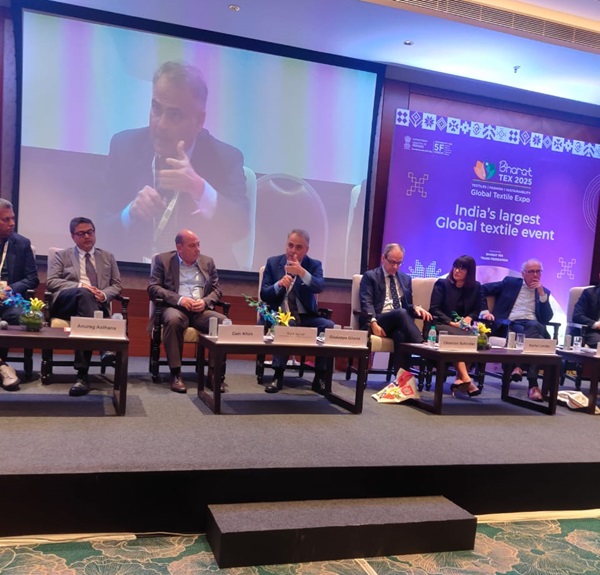
Inspiring a New Generation: The entrepreneur's journey
Altan's address resonated deeply with industry stakeholders. Young entrepreneurs, in particular, found his vision inspiring. Anaya, a budding designer with a passion for sustainable fashion, sought Altan's advice on launching her eco-conscious clothing line. "Focus on building strong relationships," he counseled. "Connect with like-minded individuals and organizations. Leverage technology to optimize your operations and minimize waste. Every step towards sustainability is a step in the right direction."
From Vision to Reality: Anaya's sustainable success story
Anaya's story exemplifies the transformative potential of Altan's vision. Embracing his guidance, she prioritized collaboration, working closely with local suppliers committed to sustainable practices. She also integrated digital tools into her design and production processes, enhancing efficiency and reducing her environmental footprint. Months later, at the subsequent Bharat Tex conference, Anaya proudly showcased her collection – a testament to the power of sustainable innovation. Her garments, crafted from recycled materials and produced with minimal environmental impact, garnered significant attention, demonstrating the growing demand for eco-friendly fashion.
The narrative of the Indian textile industry is being rewritten, with innovation, digitalization, and a deep commitment to a sustainable future. This transformation, driven by the insights, promises to position India as a dominant force in the global textile landscape.
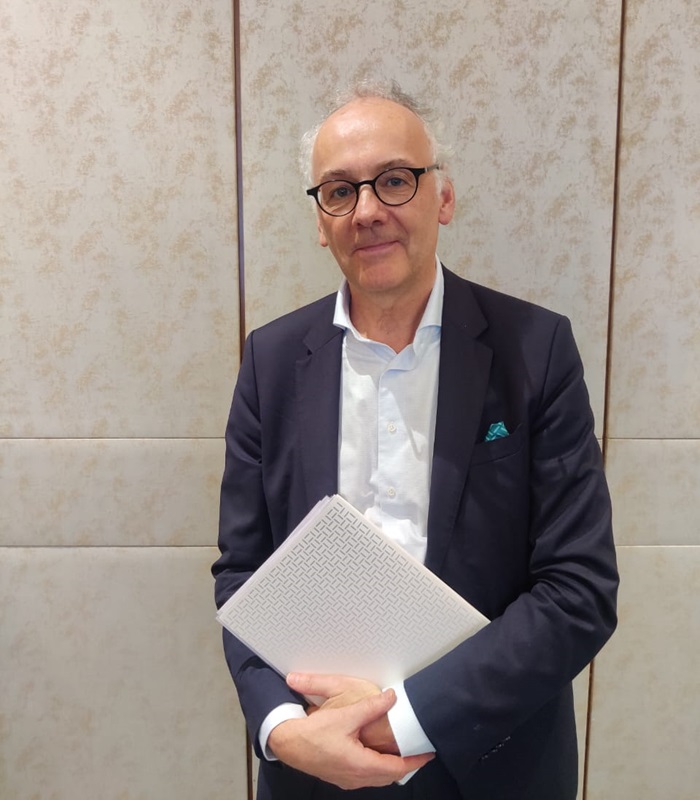
The global textile industry is undergoing a significant transformation, driven by evolving consumer demands, stricter regulations, and increasing pressure for sustainable practices. Dirk Vantyghem, Director General of Euratex(the European textile and apparel association) discusses a complex landscape shaped by sustainability imperatives and shifting global trade dynamics.
EU sets the pace for sustainable textiles
The European Union is emerging as a key driver of change, setting new standards for textile products entering its market. Vantyghem emphasizes the EU's commitment to enhancing quality and minimizing environmental impact, regardless of production origin. This translates to stricter requirements for recyclability, durability, transparency, and a significant reduction in harmful chemicals. With regulations slated for implementation in 2026, Vantyghem's message to international partners, including key players like India, is clear: compliance with these standards is non-negotiable for market access. This proactive approach positions Europe as a leader in sustainable textile production, compelling global manufacturers to adapt their practices.
The global sustainability imperative
While acknowledging the progress made by many European textile companies in adopting sustainable practices, Vantyghem recognizes the global nature of the challenge. He stresses that sustainability is not a competition between regions but rather a collective effort. The focus, he argues, should be on incentivizing and rewarding companies that invest in sustainable solutions, fostering a market environment that values responsible production. This approach encourages innovation and drives industry-wide adoption of eco-friendly technologies and processes.
Trade tensions and market volatility
The textile industry faces additional headwinds from global trade tensions and the potential for trade wars. Vantyghem expresses concern about the negative impact of such uncertainties on business confidence and global trade flows. He underscores the importance of stable international relations for fostering a healthy and predictable market environment. This stability is crucial for businesses to make long-term investments in sustainable practices and technological advancements.
A call for industry-wide transformation
Vantyghem's insights paint a picture of an industry at a critical juncture. The need to adapt to evolving regulations, embrace sustainable practices, and navigate geopolitical complexities is paramount. As Europe leads the charge towards a more sustainable textile sector, global producers must prioritize innovation and compliance to remain competitive. The future of the textile industry hinges on its ability to embrace responsible practices and create a circular economy that minimizes environmental impact.











